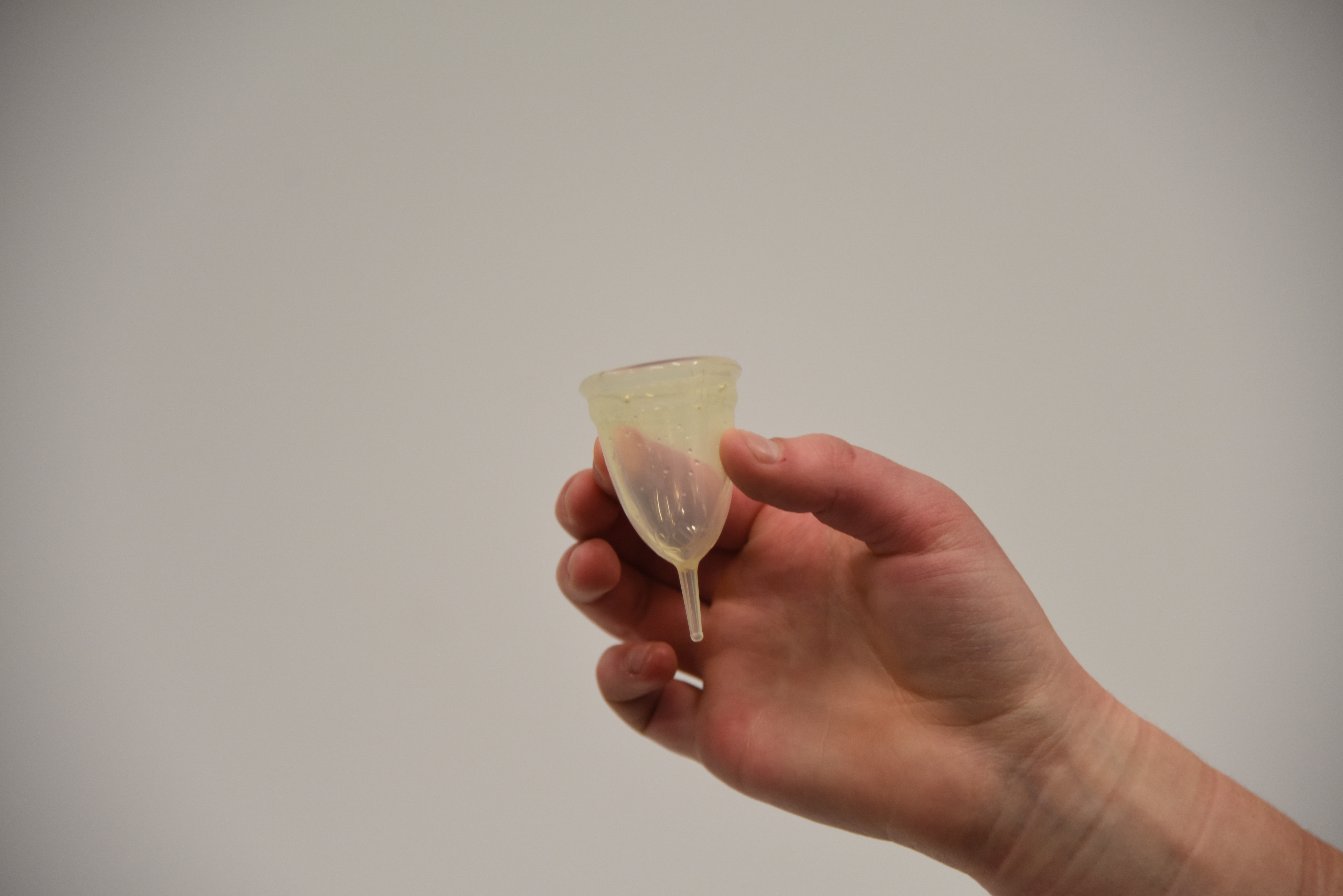by Alicia Barker | @alicialbarker
Four hundred and fifty-six, that’s the number of periods the average woman will have in her lifetime. From the time a girl starts menstruating, usually at around 13 or 14, she will have to make the decision between using pads, tampons, or a combination of both. Apparently, there’s a binary choice between sanitary products in Australia, reinforced by mothers teaching their daughters; females teaching other females.
Women converse about which they prefer, complain about using one or the other, and lament the fact that for three to seven days a month they must use copious amounts of disposable sanitary products to deal with their flow. They’ve even gathered around the country for ‘Don’t Tax My Period’ rallies, protesting against the government’s inclusion of a GST on the price of women’s sanitary products.
What many Australian women don’t realise is there are alternatives. Enter the menstrual cup. It works exactly as the name suggests. A small bell-shaped cup made from medical-grade silicone which can be inserted into the vagina to catch menstrual fluid. The user folds the cup in a C-shape to insert it, and once in position, the cup will open and form a suction cup-like-seal to stop any leaking.
Menstrual cups come in different shapes, colours and sizes. Some are hot pink and collapsible; easy to fit into a handbag. Some come in silky green pouches, with booklets proclaiming the eco-benefits of using a cup. They almost universally have ridiculous yet endearing names; ‘Mooncup’, ‘Diva Cup’, ‘Lunette’ and ‘Juju’.
Whatever you call them, menstrual cups boast several benefits as opposed to traditional pads and tampons. Firstly, they’re reusable. While most menstrual cups are initially pricey, about $50, some websites proudly proclaim their product will last up to ten years before it needs replacing. After the cup is full, or after about 12 hours of use, the user empties the cup in the toilet. They can either wipe or rinse it clean before reinserting, and a more thorough sanitisation can happen after the period ends.
This can be particularly confronting for some women. We all know the tropes of the sanitary product ad: a few droplets of blue liquid are absorbed by a clean pad or tampon, a group of girls giggle as if they’re getting up to ‘secret women’s business’ and usually someone rides off on a horse into the sunset. Dealing with your own menstrual blood in a cup can be intimidating, even downright gross, and is a far cry from the fantasy of a TV period.
20-year-old RMIT student Harriet, started using the cup last year. She turned to the cup as someone who disliked the idea of using bleached tampons, but didn’t want to regularly pay more for an unbleached option. Soon after, she began to notice other positive side-effects of using a cup.
“I like it because you can leave it in there for a really long time and you can forget that you have your period,” she says.
The combined financial and environmental benefits of using a cup were particularly appealing to Harriet.
“You don’t have to spend money on pads and tampons, you don’t have to pay the tampon tax,” she says.
“You don’t have to buy those products regularly but you’re also not contributing to the waste of those products.”
Despite how positive she felt about using the cup, Harriet experienced mixed reactions from her peers about her new discovery.
“Lots of my friends think it’s disgusting because you have to pull the cup out and empty it into the toilet, but I’m just like ‘Guys, that’s your body’.”
A problem a lot of women face is learning how to insert and remove the cup easily. While tampons and pads are user friendly, menstrual cups require more patience and can often be a pain to use initially. Belinda Tootell, founder of Freedom Products, the Australian manufacturer of the ‘Juju’ cup, says it usually takes women around three cycles to master using one.
“There is a little bit of a learning curve, getting used to using a menstrual cup, but women often forget that even when starting to use a tampon there was a little bit of a learning curve with that,” she says.
Menstrual cups aren’t a new idea. They’ve actually been around since 1932, when a group of American midwives patented the idea. Despite this, not many Australians know about them.
Instead of relying primarily on traditional advertising, ‘Juju’ is being recommended by word of mouth, Tootell says.
“We either find women are in the one camp where they’re like, ‘Tell me more about it’, they jump online, they want to research it…and then on the other hand we do get the women that go ‘Ew, that’s disgusting’,” she says.
“I do think even in Australia, menstruation is still quite a taboo subject and its not openly discussed and in fact celebrated.”
Menstrual cups can be used by most women, even after giving birth. Women are less likely to experience vaginal dryness as they would with tampons, as the cup captures the fluid rather than absorbing it. It also hasn’t been associated with Toxic Shock Syndrome, unlike tampons.
Harriet has recommended using menstrual cups to several friends, and says she hopes using a cup will become more mainstream practice in the future.
“I think a lot of pads and tampons and other sanitary products are almost marketed like…the blood is something to be ashamed of,” she says. “With the cup you’ve just got to embrace that you’re bleeding and that’s cool.”
Photo: Finbar O’Mallon


